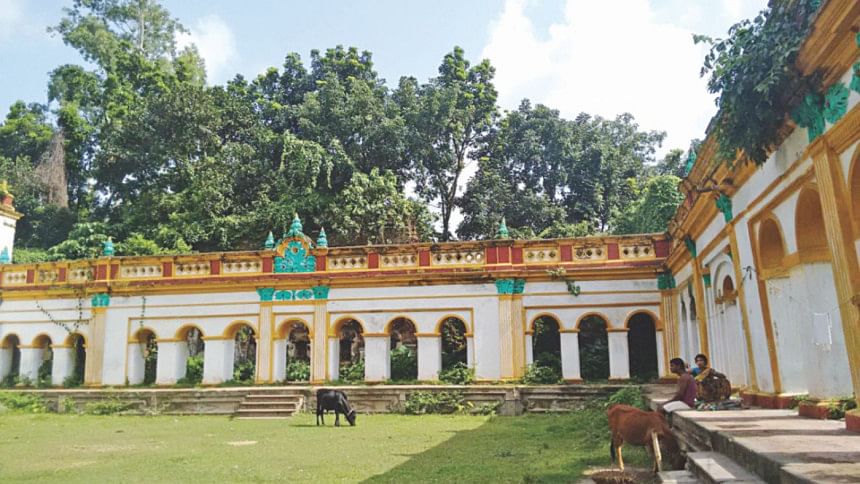Exploring the beauty of North Bengal

Parbatipur Station, awash in the monsoon rain, welcomes us with a bustle and hurry of people as our train comes to a halt there in the late evening. A junction in Dinajpur, Parbatipur symbolises all elements of the north - friendly helpful people; small tea stalls brewing tea in kettles showing their age; rickshaw vans waiting in line for passengers that are hard to come by and an inquisitive yet welcoming smile on people's faces.
In the pouring rain we secure a van, which is to drop us at our rest house. This is a "deluxe" rickshaw van service. The rickshaw-van puller, affectionately called "mama", is very interested in our reason behind visiting this place, a small village in the esoteric north, which rarely gets any tourists. He offers us paan (betel leaf), sings a song and charges a pittance for cycling us for more than two kilometres.

The highway from Parbatipur to our rest house in Haldibari is scenic, straight out of the pages of Victorian England. The evening rain has turned the sky into a mosaic of colours, casting its light on the rail line that runs beside the highway. Huge wagons of freight trains stretch for miles lending to the eerily beautiful landscape.
It is dark by the time we reach the rest house, which is also the office of a local NGO involved in enhancing skills of villagers. A quick dip in the pond and we are ready for dinner.

The food of the north is simple making use of local ingredients. Plain daal spiced with a hint of cumin, mashed potatoes with sliced onions, slit green chillies and mustard oil with small fried fish makes a sumptuous dinner.
The evening is whiled away under a clear sky after the rain washes away all the clouds. The sky in the north is beautiful, relatively free of light pollution, a thousand stars sparkle in the night sky.

The next morning, we head out early. It is a bright day and the monsoon sky is oddly blue, with swirling white clouds breaking its monotony. Another rickshaw van, another "deluxe" van ride and we go almost 30 kilometres in search of the beautiful Kantaji Mandir in Kantanagar, Dinajpur. The late-medieval Hindu temple is one of the most magnificent religious edifices belonging to the 18th century.
The temple belongs to the popular Hindu Kanta or Krishna and this is most popular with the Radha-Krishna cult (assemble of memorable love) in Bengal. After a little asking around, we reach the temple. Standing tall and magnificent, the structure humbles us. The detailed terracotta work leaves us in awe for hours. Each tile boasts of detailed artwork depicting the lives of mythological gods and goddesses in different forms and shapes. It tells their story, depicted their day-to-day lives and captures their story in the terracotta tiles for generations to come.

The pundit at the temple tells us Kantaji Temple is built in a 'navaratna' (nine-spired) style before the minarets were destroyed in the earthquake of 1897.
Outside the temple, we sit for a cup of tea. The milk produced by the cows inside the temple is used in our tea. It is sweet and milky and goes beautifully with the puffed rice that was given with the tea. From here, we head off towards the Rajbari in Dinajpur town.

The old town is in ruins, majestic walls lie in crumbles as time and nature takes over. The Rajbari stirs a chord as we spend the afternoon in the lonely premises soiled by a few empty packets of Potato Crackers lying here and there. The evening ends with a visit to the historic Ramsagar Lake, one of the largest manmade lakes in Bangladesh. A lone horse eats grass on the banks as evening falls.
The esoteric north has many more stories to tell. Many more landscapes to visit and leaves you wanting for more. A quaint local bazaar, named Model Bazar takes up one afternoon, drinking tea, talking local politics, while another evening is taken up by walks on the zigzag tracks of a Santhal village.
The north is quaint, quiet and boasts of unexplored raw beauty.
By Abida Rahman Chowdhury
Photo: Abida Rahman Chowdhury

 For all latest news, follow The Daily Star's Google News channel.
For all latest news, follow The Daily Star's Google News channel. 








Comments